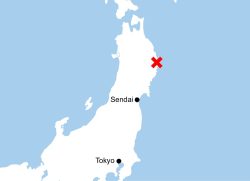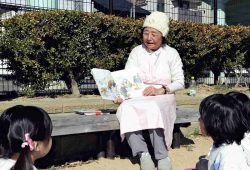LDP Presidential Election: Can The Party Seize This Opportunity to Be Reborn?
15:13 JST, August 21, 2024
The ruling Liberal Democratic Party’s presidential election is likely to be a tight race with many candidates, now that the constraints of party factions have been removed. The LDP should not just choose a new face of the party for the next House of Representatives election; it should select someone suitable to be prime minister based on their policies and insights.
The LDP has decided to hold a party presidential election to choose Prime Minister Fumio Kishida’s successor, with the official start of the campaign on Sept. 12 and voting and ballot counting on Sept. 27. The new president will be nominated as the prime minister as soon as early October.
Eleven people, including Cabinet members and young party lawmakers, have expressed their intention to run for LDP president, so it is likely to be a fierce race in which the number of candidates is expected to exceed five, the largest in presidential elections since the 2000s. The presidential hopefuls are making every possible effort to secure the recommendations from 20 party lawmakers that they need to file for candidacy.
Factions played a coordinating role in past presidential elections, as they had their leaders as candidates and decided the recommendations each faction would make.
However, following Kishida’s announcement that his faction would disband in response to the scandal over hidden funds involving LDP factions, all other factions except the Aso faction have decided to dissolve one after another.
In this presidential election, LDP Secretary General Toshimitsu Motegi and former Chief Cabinet Secretary Katsunobu Kato have announced their intention to run from the Motegi faction, while Chief Cabinet Secretary Yoshimasa Hayashi and Foreign Minister Yoko Kamikawa have announced their intention to run from the Kishida faction. This demonstrates that the constraints of factions are no longer effective.
As a result, LDP lawmakers can now decide whom to recommend as a candidate without being influenced by the wishes of their factions.
Both the candidates and lawmakers who have recommended them must be able to explain why they are suitable to be the next prime minister. The LDP as a whole is being called into question as to whether the party deserves to be reborn.
Another feature of this presidential election is a move toward a generational shift.
Takayuki Kobayashi, a 49-year-old former minister in charge of economic security who has been elected four times, has officially announced his candidacy. Former Environment Minister Shinjiro Koizumi, 43, who has been elected five times, has also expressed his desire to run. Other lawmakers intending to run include Shigeru Ishiba, a former LDP secretary general who has served in many cabinet posts, and digital minister Taro Kono.
It is hoped that lively debate between veteran and young candidates will take place.
The presidential election campaign will last for 15 days, the longest period since the current presidential election regulations were established in 1995.
The security environment surrounding Japan is more severe than ever. There are numerous domestic issues that need to be tackled, such as the declining population. Hopefully, candidates will present specific policies on both foreign and domestic issues in public debates.
How to take responsibility for the scandal over hidden funds involving factions will also be a major theme. It is important for each candidate to take opportunities such as debates to make their views clear.
LDP lawmakers need to take seriously the fact that the LDP itself is being called into question in the presidential election.
(From The Yomiuri Shimbun, Aug. 21, 2024)
Related Tags
"Editorial & Columns" POPULAR ARTICLE
-

Artificial Intelligence Expands Possibilities for Foreign Language Learners
-

Build Intellectual, Physical Strength, As Well As Communicative Power / Japan Should Move from Beneficiary to Shaper of World Order
-

Global Economy in Turmoil: Prevent Free Trade System from Going Adrift / Risks to Financial Markets Must Be Heeded
-

Japan-China Strain Set to Persist as Beijing Officials Self-Interestedly Bash Tokyo; Takaichi Unlikely to Back Down
-

French and German Ambassadors to Japan Call for Democracies to Unite in Defense against Russian Disinformation
JN ACCESS RANKING
-

As Chinese Tourists Shun Japan, Hotels and Stores Suffer
-

Osaka-Kansai Expo’s Economic Impact Estimated at ¥3.6 Trillion, Takes Actual Visitor Numbers into Account
-

Japan Govt Adopts Measures to Curb Mega Solar Power Plant Projects Amid Environmental Concerns
-

BOJ Gov. Ueda: Highly Likely Mechanism for Rising Wages, Prices Will Be Maintained
-

Economic Security Panels Debate Supply Chains, Rare Earths; Participants Emphasize Importance of Cooperation Among Allies





















